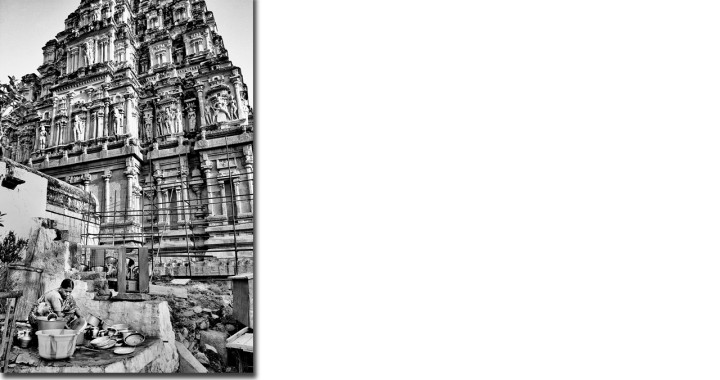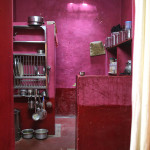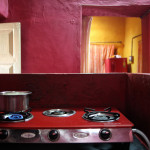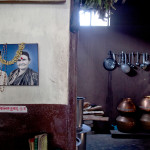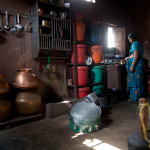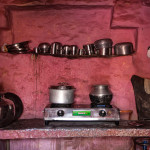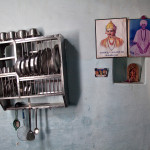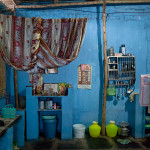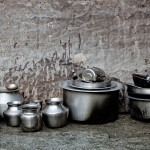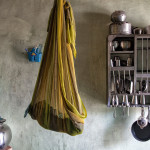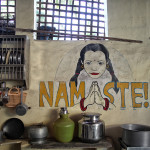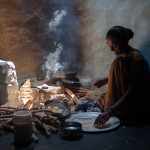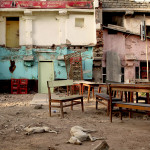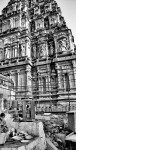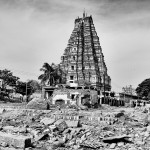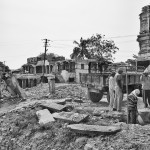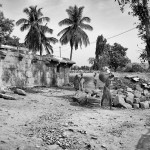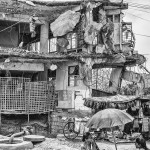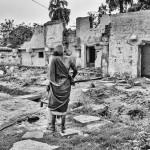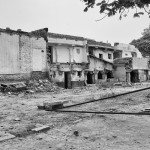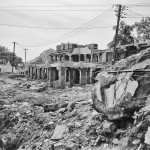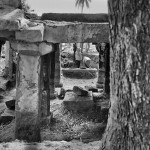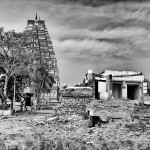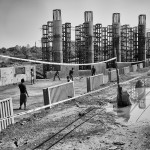Paradiso degli hippies, oggi who Knows… (chi lo sa)
La cucina era il cuore di queste piccole abitazioni, collocate tra meravigliosi templi. All’interno di queste piccole cucine, altarini, divinità e foto di antenati vicino al piano di cottura, parlavano di tradizioni e memorie indiane ma di etnie diverse.
Nel 2012, un anno prima della distruzione, Soraya Gullifa ha fotografato le cucine di queste piccole abitazioni, senza sapere che sarebbero state demolite nel 2013.
© Soraya Gullifa
Sulle rive del fiume Tungabhadra nello stato del Karnataka a sud dell’India appare come un miraggio: Hampi.
Situata fra le rovine dell’antica città di Vijayanagara, Hampi appartiene al patrimonio dell’UNESCO dal 1986 è diventata meta prescelta di Sadhu e di hippies negli anni della beat generation sino ai giorni nostri.
Durante questi anni, famiglie indiane provenienti dalle zone più povere si sono insediate nella zona archeologica, costruendo le loro abitazioni tra le rovine e templi, piccole guest-house e ristorantini per i viaggiatori e pellegrini.
Nel 2013 l’UNESCO ha iniziato il progetto di Hampi, sul rinnovo del territorio, abbattendo tutto ciò che era costruito nelle zone archeologiche, tra cui le piccole abitazioni, guest house e ristorantini, lasciando la popolazione in gravi difficoltà.
Oggi Hampi, appare come un cantiere a cielo aperto, gli operai lavorano incessantemente notte e giorno per demolire e lavorare alla costruzione di una superstrada e ai nuovi Resort rivolti ad un turismo d’elite.
Sicuramente il ritmo della vita da cui arriviamo noi occidentali è totalmente diverso da questi luoghi legati al ritmo della terra, delle stagioni e della vita di villaggio, non ci sono palazzi ma immense distese di riso, non ci sono macchine ma carretti e buoi…
Nella pace del fiume che scorre sui sassi levigati dal tempo, mentre le donne stendono lunghi sari ad asciugare al sole cocente assistiamo al nuovo che arriva…
Shobha Ha lavorato per anni su Hampi, raccogliendo storie di ordinaria quotidianità.
Nel 2013 ha continuato il suo racconto con l’inizio dell’abbattimento dei luoghi abusivi di Hampi
© Shobha
Paradise of hippies, today who Knows …
The kitchen was the heart of these small houses, placed among beautiful temples. Within these small kitchens, altars, photos deities and ancestors close to the hob, spoke of Indian traditions and memories but from different ethnic groups.
In 2012, a year before the destruction, Soraya Gullifa photographed the kitchens of these small houses, not knowing that they would have been demolished in 2013.
© Soraya Gullifa
On the banks of the Tungabhadra River in the state of Karnataka in southern India appears like a mirage in Hampi .
Set in the ruins of the ancient city of Vijayanagara , Hampi belongs to the UNESCO world heritage site since 1986, has become a preferred address for Sadhu and hippies during the years of the beat generation to the present day .
During these years, Indian families from the poorest areas have settled in the archaeological zone , building their homes in the ruins and temples, small guest-houses and restaurants for travelers and pilgrims.
In 2013, UNESCO has initiated the project of Hampi, on the renewal of the area , knocking down everything that was built in the archaeological areas , including small homes , guest houses and restaurants, leaving the population in dire straits .
Today Hampi, looks like a open work construction site; the workers work tirelessly day and night to tear down and work on the construction of a highway and new Resorts aimed at an elite tourism .
Certainly the pace of life from which we get us in the West is totally different from these places linked to the rhythm of the earth, the seasons and the life of the village, there are no buildings but vast expanses of rice , but there are no cars carts and oxen …
In the peace of the river flowing over the stones polished by time , while women lie long saris to dry in the hot sun we see the new that comes …
Shobha has worked for years on Hampi, collecting stories of ordinary everyday life.
In 2013 she continued her story with the beginning of the demolition of illegal places of Hampi.
© Shobha

